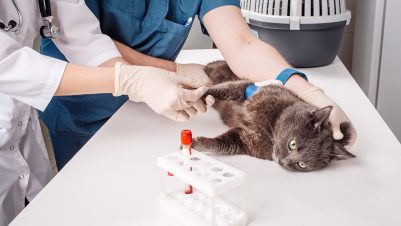The intricate detail of the life cycle of the liver fluke (Fasciola hepatica) which involves the pond snail (Galba truncatula, previously known as Lymnaea truncatula) as an intermediate host is one of the marvels of the natural world. F. hepatica is a parasite of the Trematoda class which is present on every continent and was first reported by Jehan de Brie in 1379 in sheep. Its life cycle was discovered in the late 1800s and since that time it has become one of the most studied parasitic infections in the world. The disease caused by F. hepatica is known as fasciolosis.

Liver fluke control requires an understanding of the epidemiology of the disease. The main factors which affect the population of the parasite on the pasture are rainfall and temperature. Increased rainfall improves the snail’s habitat (Figure 1), the development of the fluke eggs and the intermediate life cycle within the snail. Temperature plays a part with the life cycle requiring a minimum temperature of 10°C, with temperatures above 15°C resulting in a more rapid multiplication of the parasite.
Cercariae are released from snails in late summer and early autumn which develop into infective metacercariae. Metacercariae can survive on pasture for several months to infect grazing cattle. Egg-laying adult liver fluke develop 10 to 12 weeks after ingestion of the metacercariae and fasciolosis is then seen in cattle from mid-winter onwards, although increasingly it is being diagnosed during the grazing season.
Our knowledge of this life cycle means that we can predict the risk of infection each year and forecasts are regularly given out to farmers regarding the level of risk.
Climate change is certainly favourable to the parasite because milder winters mean an increased survival of the infected snails, which allows an earlier start to the infective cycle, and wetter summers mean an increased snail population and also snails being introduced into areas which were previously unsuitable for them. Draining high-risk pastures (Figure 1) or avoiding grazing them will not be possible for most farmers, but fencing off high-risk areas of the pasture is often a realistic option.
In dairy herds, because fasciolosis is predominantly a subclinical disease its importance can be easily underestimated by farmers. Subclinical disease causes reduced milk yield, depressed fertility and lower body condition scores. In high yielding dairy herds, it has been shown that just a few liver flukes can reduce milk yield and butterfat. The effects of liver fluke in late pregnancy result in a negative energy balance, a lower birth weight of calves and an increase in metabolic disease post-calving.
Replacement heifers with fasciolosis will have poorer growth rates and feed conversion and it will affect their lifetime productive performance.
In beef suckler herds, the effects on fertility, milk quality and condition scores are similar to those in dairy cows. Calves and fattening cattle show a marked reduction in daily live weight gain and there will be consequences to the carcass quality. The effects of fasciolosis are most severe in spring calving beef herds where pregnant cows lose bodyweight which results in weaker calves, poor quality milk and a predisposition to secondary infections. It is also important to recognise the effect that fasciolosis has on breeding bulls and their performance and to ensure they are included in treatment plans.
If the disease is allowed to progress to the clinical stages then the signs seen are severe weight loss, diarrhoea and swelling under the jaw or “bottle jaw” (Figure 2) which is a result of low protein levels in the blood stream. Liver fluke infection can also precipitate other serious diseases such as “black disease”, a clostridial infection which results in sudden death, or it can be associated with outbreaks of Salmonella. There are also concerns that fasciolosis reduces the accuracy of the bovine tuberculosis skin test.
However, despite all this wealth of knowledge, fasciolosis is still an important disease in cattle, in fact it is estimated that it costs the UK cattle industry around £40.4 million annually. One of the main issues revolves around the difficulty in producing effective new medical compounds to treat the condition. Most of the current flukicides available have been around for a long time and were developed from the salicylanilide and benzimidazole compounds which were introduced in the 1970s. The most potent of these compounds is triclabendazole and resistance to its action is becoming an increasingly reported problem.
The situation for the dairy industry became more complicated in 2013 when the European Commission, working with the European Medicines Agency, changed the summaries of product characteristics (SPCs), marketing authorisations (MAs) and labels of many medicines containing flukicides across the European Union. Since that time many anthelmintics have also had their SPCs and MAs reviewed.
The development of the InfiniPlex for Milk assay test (IPM) has facilitated testing for the residues of all medicines and allowed a more proactive surveillance by the licensing authorities, dairy processors and retailers. Veterinarians, pharmacists and SQPs should ensure that all farmers are made well aware of the restrictions that apply in dairy animals regarding the use of certain flukicides (and anthelmintics) and also that advice on withdrawal periods is clear and concise.
Dairy herds require a whole herd strategy for the control of fasciolosis because once the parasite becomes established there are few opportunities available to treat it in the adult milking herd. The only treatment opportunity (for a restricted group of products) which avoids discarding milk is at the start of the dry period, so the first target of the control plan should be to have heifers entering the herd that are as free as possible from infection. This is an achievable target because there are many more options regarding treatment in youngstock. Extra risks involve purchased animals entering the herd carrying egg-laying fluke, sheep grazing the dairy pasture and the possibility of introducing triclabendazole-resistant strains.
Beef herds are able to be much more proactive regarding treatment protocols for all classes of stock. It is important to rotate compounds and also to ensure that the treatments are targeted at the correct time to kill fluke and also reduce egg contamination of the pasture. Flukicides which are effective against immature fluke should only be used when immatures are present, as determined by the life cycle, to limit the development of resistance.
It is essential that the farm veterinarian is involved with the development of the fluke control program and protocols should be decided upon to monitor its effectiveness. Purchased animals should be quarantined and tested.
A variety of tests are available and care is needed to use the correct test in order to obtain meaningful results.
The faecal coproantigen test does not rely on adult fluke being present or egg production; it detects liver fluke two to three weeks before eggs are found in the dung and it can be used as soon as seven days after treatment to measure success.
Faecal egg counts are not completely reliable; clinical disease can be caused by both mature and immature fluke, and adult liver fluke may not shed heavily in cattle. Eggs may accumulate in the gall bladder before being released and may only be present sporadically in the faeces. After successful treatment, eggs may be detected for up to three weeks due to dead flukes disintegrating and releasing eggs.
Always take fresh samples from a number of cattle and submit pooled samples. Where faecal egg counts are positive but the coproantigen test is negative, it would suggest that rumen fluke, rather than liver fluke, are present in the herd.
The fluke antibody test is specific for exposure to immature and adult liver fluke. It takes two to four weeks for detectable antibodies to be produced and it is useful for cattle in their first grazing season, purchased animals and as an early warning in farms with a low risk after a wet summer. The antibody test can be useful both in individual animals and on a herd basis in dairy herds using a bulk milk sample. The test shows exposure to infection rather than current infection and it takes a three- to six-month period for the antibody levels to start to fall. The bulk milk test can be used to monitor the effectiveness of a fluke control programme in dairy herds, with titres gradually falling over a year showing the effectiveness of the control plan. If rapid feedback is required it would be more appropriate to use the faecal coproantigen test.
Abattoir feedback from culled cows provides very useful information and it is an area where communication has improved markedly in recent times, with many reports also distinguishing between active and historic infection.
Other good management practices such as regular body condition scoring and metabolic profiling (albumen, AST, GGT and GLDH) are helpful in gauging whether there is an underlying subclinical infection in the herd.






